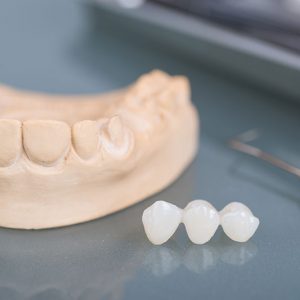
Dental Bridges powder springs GA are fixed restorations that replace missing teeth. The bridge joins artificial teeth to adjacent teeth or dental implants. Bridges may be temporary or permanent. The type of bridge used depends on the needs of the patient and the condition of the natural teeth. Bridges have many advantages over other treatments and can be a viable option for many patients.
Dentures
For people who are missing a few teeth, dentures and dental bridges are two of the options to replace them. Each tooth is essential for proper alignment, and missing teeth can affect your appearance and bite. You may also experience problems speaking, chewing, or even kissing. There are several options for tooth replacement, but dentures are the most popular choice.
Dentures can be used to replace a single tooth, or the entire set of missing teeth. While dental bridges are more permanent, they are less cost-effective. They can last up to 15 years, if properly maintained and cared for. While dentures and dental bridges are both options for replacing missing teeth, you should consider the type of replacement that is right for your lifestyle and dental health.
Dental bridges can be made of various materials, but the most common is porcelain, which matches the color of the surrounding teeth. Another benefit of dental bridges is their permanence. They don’t need to be taken out and replaced every few years, so patients don’t have to change their diet or oral hygiene routine.
Crowns
Crowns are dental restorations that are used for protecting or replacing a tooth. The procedure for crown placement is different depending on the type of restoration. The procedure also involves the placement of dental implants, which act as the tooth roots. Once the implants have been placed, the dentist will attach the crown to the abutment.
Crowns can be made of a variety of materials, including porcelain and various metals. Each material has its own benefits and disadvantages. For example, ceramic crowns are more durable than metal crowns, and porcelain crowns look and feel like real teeth. However, porcelain and zirconia crowns have the added advantage of being highly aesthetic, as they do not contain metal.
Traditional bridges are the most common type of dental bridge and include dental crowns on both sides of the gap. These are typically made of porcelain fused to metal, or ceramic. Another type of bridge is called a cantilever bridge, which uses only one natural tooth to support the bridge. These are not as common as traditional bridges, and are not recommended for the back of the mouth.
Temporary bridges
Temporary dental bridges are used to replace one or more missing teeth and can improve a patient’s smile. While some people can live without missing teeth, others have to wear dental bridges for health reasons, such as preventing gum disease or ensuring proper nutrition. Another benefit of dental bridges is that they can help maintain the shape of a person’s face. Missing teeth can cause facial deformity, so this type of restoration is useful for people who suffer significant tooth loss.
Temporary dental bridges are not as strong as natural teeth, so they need to be used with caution. Patients should avoid chewing too hard or consuming sticky foods to avoid dislodging the temporary bridge. A healthy diet that is rich in fresh fruits and vegetables will also help. But the most important thing to remember is not to force food into the gap!
Temporary dental bridges can be made of porcelain or metal. The most common kind of dental bridge uses porcelain or metal frameworks that attach to the teeth on either side of the gap. While they are often considered more secure than other forms of tooth replacement, they require more dental work. Moreover, they are more expensive and invasive than other types of bridges.
Implant-supported bridges
Implant-supported dental bridges replace a missing tooth by placing a post that looks like a tooth root in the jaw. The posts are surgically placed into the jaw bone using advanced imaging techniques like computerized tomography. The posts are then allowed to integrate with the bone over four to six months. As they integrate with the bone, they act as new tooth roots, supporting the new bridge. The dentist can then securely attach the bridge to the abutments, which rest above the gum line.
Implant-supported dental Bridges powder springs GA work just like traditional bridges, but they have many advantages over traditional bridges. These bridges are more stable, have a natural look, and stimulate bone growth. Furthermore, they do not affect the adjacent teeth, ensuring that natural tooth spacing will be preserved. This type of restoration is ideal for replacing multiple missing teeth.
Another benefit of implant-supported dental bridges is their ability to preserve bone volume and density. This means that implants can last for a lifetime, although you will need to take care of them to keep them looking their best.
